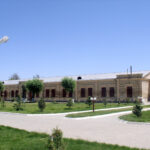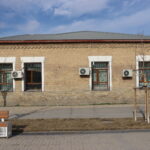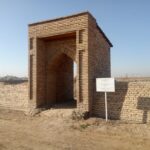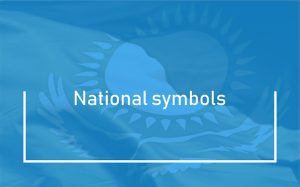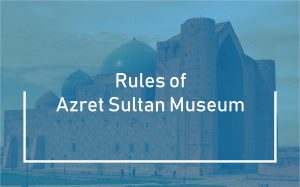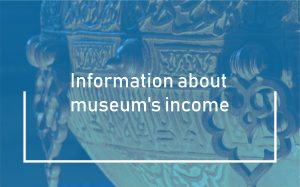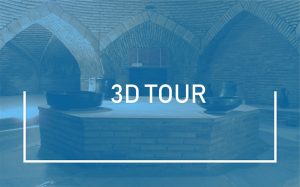Scientific and educational expedition “In the footsteps of Yasawi” organized by the State Historical and Cultural Museum-Reserve “Azret Sultan” was devoted to the teachers and students of famous Khoja Akhmed Yassawi.
— “Today we began our journey from the mausoleum of Arystan Baba in the sacred land of Otrar. Here rests Arystan Baba, the beloved teacher of our ancestor Khoja Akhmed Yassawi, who, according to legends, conveyed the message of the Prophet Muhammad (peace be upon him). We dedicated the Quran to Baba and familiarized ourselves with his historical data. According to legends, our ancestor Akhmet Yassawi had 99,000 disciples. Most of the disciples were sent out to preach, some of them to remote areas. Even in the historic cities of Otrar and Turkestan, famous people who were disciples of Yassawi were buried. Our goal is to introduce the public to sacred places, people connected to the world of Yassawi, based on historical facts and legends, to revive the traces of Yassawi. If we do not widely promote the history of Yassawi’s world now and do not summarize its history, they may be forgotten in the future,» said Nurbolat Akhmetzhanov, director of the State Historical and Cultural Museum-Reserve “Azret Sultan”.
The participants of the expedition visited the cemetery of Sopa Danyshpan, located on the eastern side of the highway between the mausoleum of Arystanbab and Otyrartobe city. According to sources, a man named Sufi Muhammad Danyshpan is considered one of the famous disciples of Khoja Ahmed Yassawi and his nephew.
For example, in the annals of Safi ad-din Oryn Koylaki «Nasab-nama»: Sufi Muhammad Danishman was a disciple of Khoja Ahmet Yasawi for 40 years. After Sheikh Ahmed Baba Sufi Muhammad gave permission and said: Now you can live your life in Otrar. The brother of my great-grandfather Hazrat Sultan said to my grandfather Danishpan Khoja: He told you to go to Otrar, open your school, and bought land for 300 red gold.
At the end of the 12th century a Sufi sage was the leader of the Sufis in Otrar. When the Mongol army arrived, he mediated in his hometown, persuading them to open the gates voluntarily and save the people. Genghis Khan named the city Kutty Balyk and named Danyshpan Zernuki. “Nasab-nama versions say that Sufi Danyshpan lived 93 years,» said Z. Zhandarbek.
According to legends, the son of Sadyr Shayyk Danyshpan miraculously went to Mangistau to fight the infidels. It is said that the mountain there is now called Danyshpan.
At the end of the Sufi Danyshpan he wrote down the words of Khoja Ahmed Yassawi and left a treatise called «The Mirror of the Soul» (mirat-ul kulub). One version of this work survives in the old records of the University Library in Uppsala, Sweden. It was translated and published in modern Kazakh in Turkey.
The visit to the disciples of Yassawi continued at the mausoleum of Yussuf Ata, a nephew and contemporary of Khoja Ahmed Yasawi. His mausoleum is located in the village of Eski Ikan, 25 km from Turkestan. Archeological excavations of the monument of local importance in 2005 showed that the foundation of the building was laid as early as the 15th century. It is known that during his lifetime a lot of new information began to appear about Yussuf Ata, who was both a leader and a preacher in the country of Ikan. In this regard, the management of the reserve-museum talked to the village elders and exchanged views on a deeper study of historical artifacts kept in the hands of the people.
During the visit, they also visited the mausoleum of Imam Markozy, a disciple and contemporary of Khoja Ahmed Yassawi.
The mausoleum is located in an old cemetery on a high hill south of the village of Shobanak, 7 kilometers from Turkestan. The locals call the cemetery «Koktondy-Ata Sacred Cemetery». Built using architectural solutions typical of the southern regions of Central Asia and Kazakhstan, domed and with a tower.
The total size of the mausoleum is 10 x 12 meters. Before entering there is a small corridor one meter to the right and to the left. Go up the right corridor, take the stairs to the ceiling, through the corridor in the left wing to a room 4 x 3 meters, and then to a room 6 x 3 meters. In the middle of the room is a 1-meter metal lattice window. Through the window one can see the cemetery where the tomb of Imam Markozy is located.
There are two opinions about the real name of Koktondy Ata. One is Imam Markozy (Marguzi, Mergazi, Maruazi). The second is Baba Mashin. According to local legends, he lived during the time of Khoja Ahmed Yassawi, was his monk and was a pure man who spread Islam in the region and practiced healing in the country. He was nicknamed Koktondy Ata because he always wore a blue shapan.
According to the legends, Kok Tondy Ata was always looking for an excuse to talk to Akhmet Yassawi. He didn’t just go to him, dragged all the books he had. Akhmet Yassawi sees the books and throws them into the water. Surprised, Blue Shapan looked at the Holy Guru and asked why he threw the books into the water, that they would now become useless. Then that Akhmet Yassawi pulled the books dry out of the water and replied that he was just shaking the dust off them. Blue Shapan marveled at such a miracle. Today, people who suffer from whooping cough believe that the earth from the tomb of Kok Tondy Ata can be cured of the disease. There are legends that Akhmet Yassawi, before his death, entrusted the Blue Chapan saint with his funeral.
In addition, one of the twelve disciples of Khoja Ahmed Yassawi, the rival poultryman Kussha Ata, also contributed significantly to the spread of Islam among the local population. He is buried in the tomb of Kussha Ata, located on the road between Kentau and Turkestan.
One of Khoja Akhmed Yassawi’s next disciples, Suleiman Wali, was buried in an ancient cemetery on the bank of the Karashyk River. The locals erected a small mausoleum on the tomb of Suleiman the Magnificent, who received both religious teachings and priesthood miracles during his lifetime. It is not known who owns another tomb next to Solomon’s tomb.


